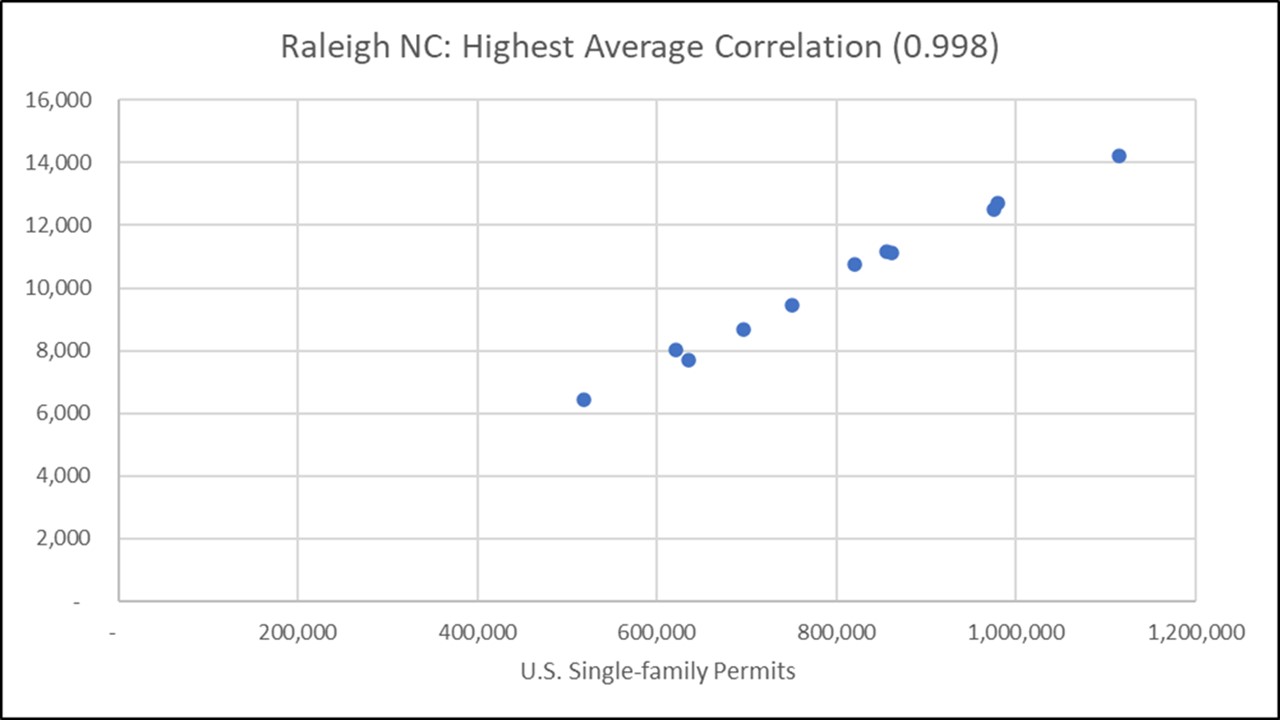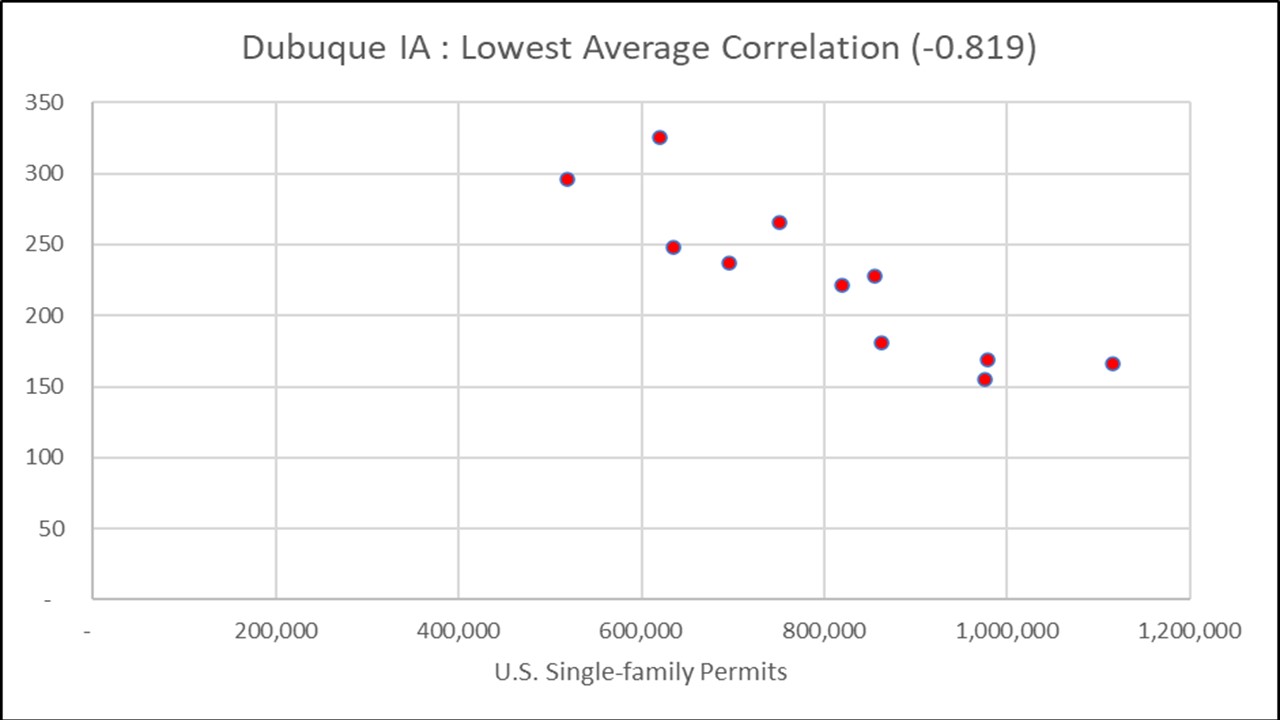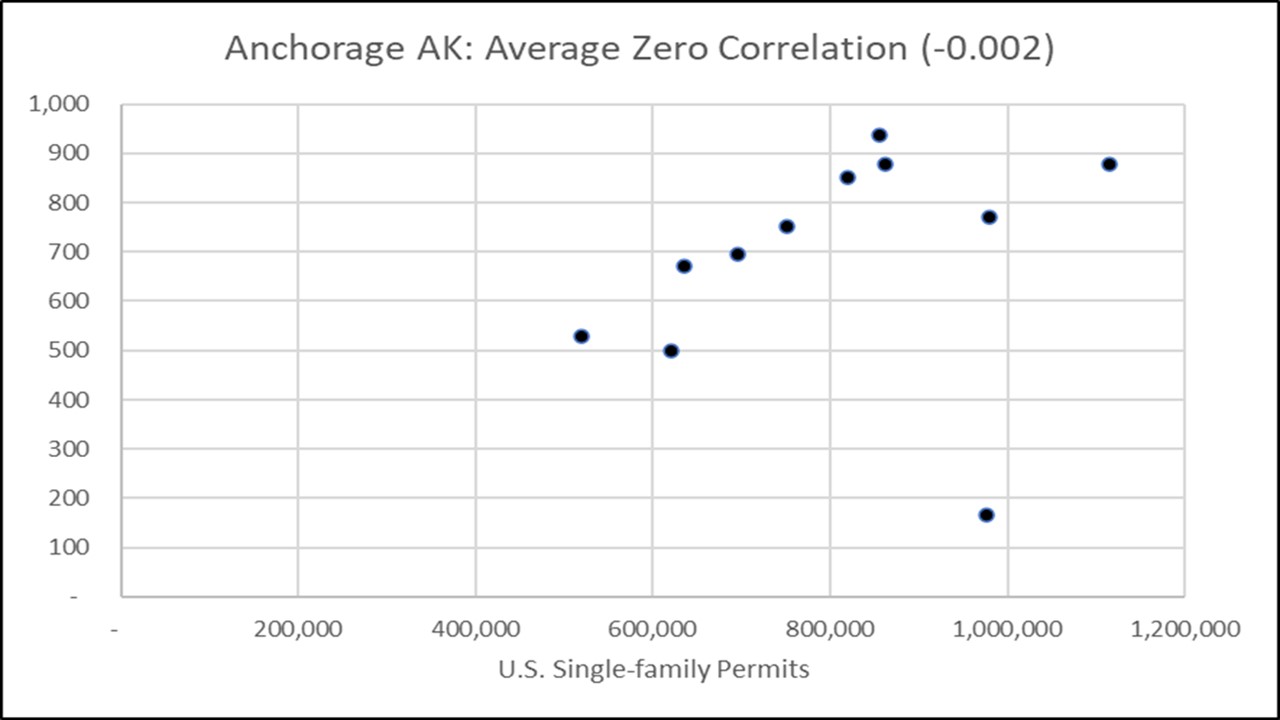New NAHB analysis of single-family permits shows which Metropolitan Statistical Areas (MSAs) have been trending in the same direction as U.S. single-family permits. Using single-family permits from 2012-2022, five-year and ten-year correlations are used to create an association index for each MSA that describes how similar, or dissimilar, particular MSAs are when compared to the national trend. The post focuses on single-family permits, a similar analysis of multifamily permits will be posted in the coming weeks.
NAHB’s purpose in developing this set of statistics, which will be updated annually, is to give local industry leaders a statistic to describe whether or not their local market typically matches overall macroeconomic conditions. And as a set of statistics, the MAI provides forecasters another variable to scale and distribute local market forecasts for home building.
The Market Association Index (MAI) is created by using the average of the five-year correlation and ten-year correlations between the U.S. single-family permit level and the respective MSA. With this method, the five-year trend is weighted more than the ten-year trend because the five years overlap within both variables. The MAI correlation coefficient that is calculated for both years can range from a negative one to a positive one and measures the strength of the linear relationship between the respective MSA and the U.S. A correlation of negative one would mean there is a perfect inverse linear relationship between the two geographies, while zero means no linear relationship and a positive one represents a perfect positive linear relationship. After taking the average of the five- and ten-year correlations, the MSA percentile rank of correlation is determined amongst all MSA. This way, the MAI provides simple reading of which metro areas have single-family home building trends that look the most like national dynamics in terms of growth and contraction.


The scatter plots above illustrate MSAs on opposite ends of the distribution of correlations, where Raleigh, North Carolina has the highest degree of association with the national trend while Dubuque, Iowa had the most negative correlation with respect to the national trend.

In the middle of the distribution, the average correlation for Anchorage, Alaska was zero, with the graph showing no linear relationship between the two variables. Of the 383 metro areas, the average correlation is 0.495. In total, 314 MSAs had a correlation greater than a zero and 69 MSAs had less than zero. This is expected as historically in aggregate MSAs have on average, accounted for 90.4% of all single-family permits in the U.S. between 2012 and 2022. Therefore, a majority of the MSAs should follow the national trend.
The map below displays the percentile rank of each MSA. Hovering over a particular MSA will display its percentile rank.
MSAs in the southeast tended to have a much higher percentile rank when it comes to the MAI. MSAs in the northeast were more likely to have a lower percentile rank compared to other regions. The ten highest ranked MSAs trending to the national level are below.

The ten lowest association index MSAs which are least likely to follow the national trend are below.

The full single-family MAI file for 2022 can be downloaded here.
Discover more from Eye On Housing
Subscribe to get the latest posts sent to your email.

As local markets align with national patterns, construction loans can provide developers with the flexibility to capitalize on emerging trends, fostering resilience and responsiveness within the construction sector.